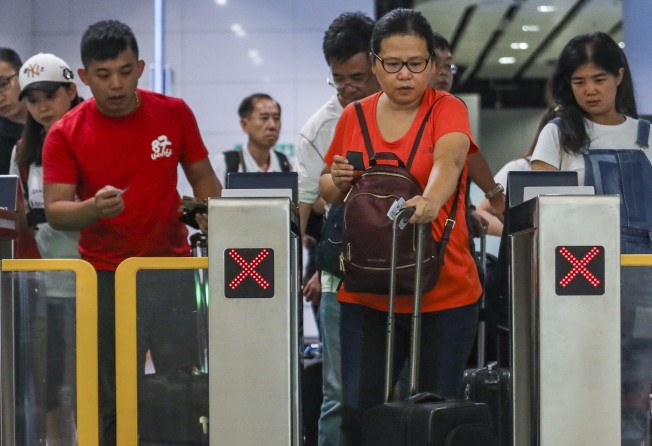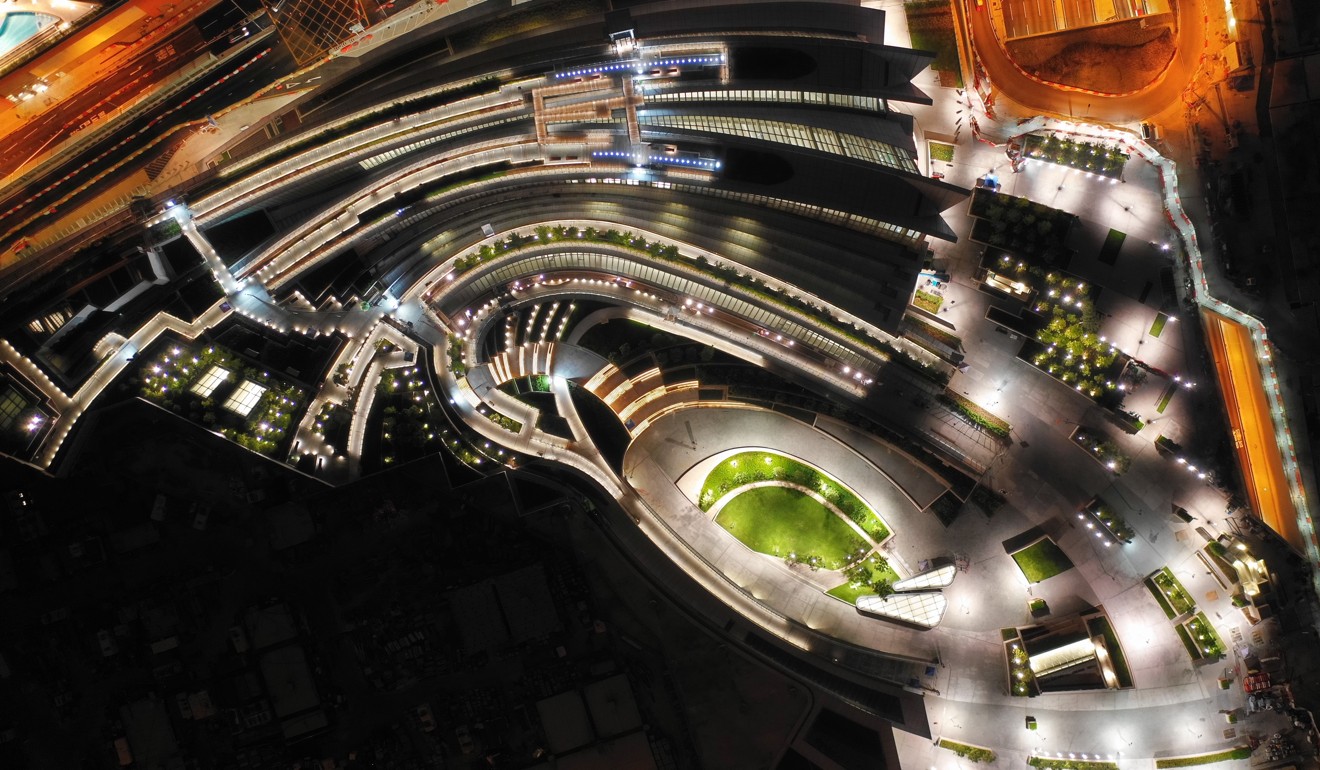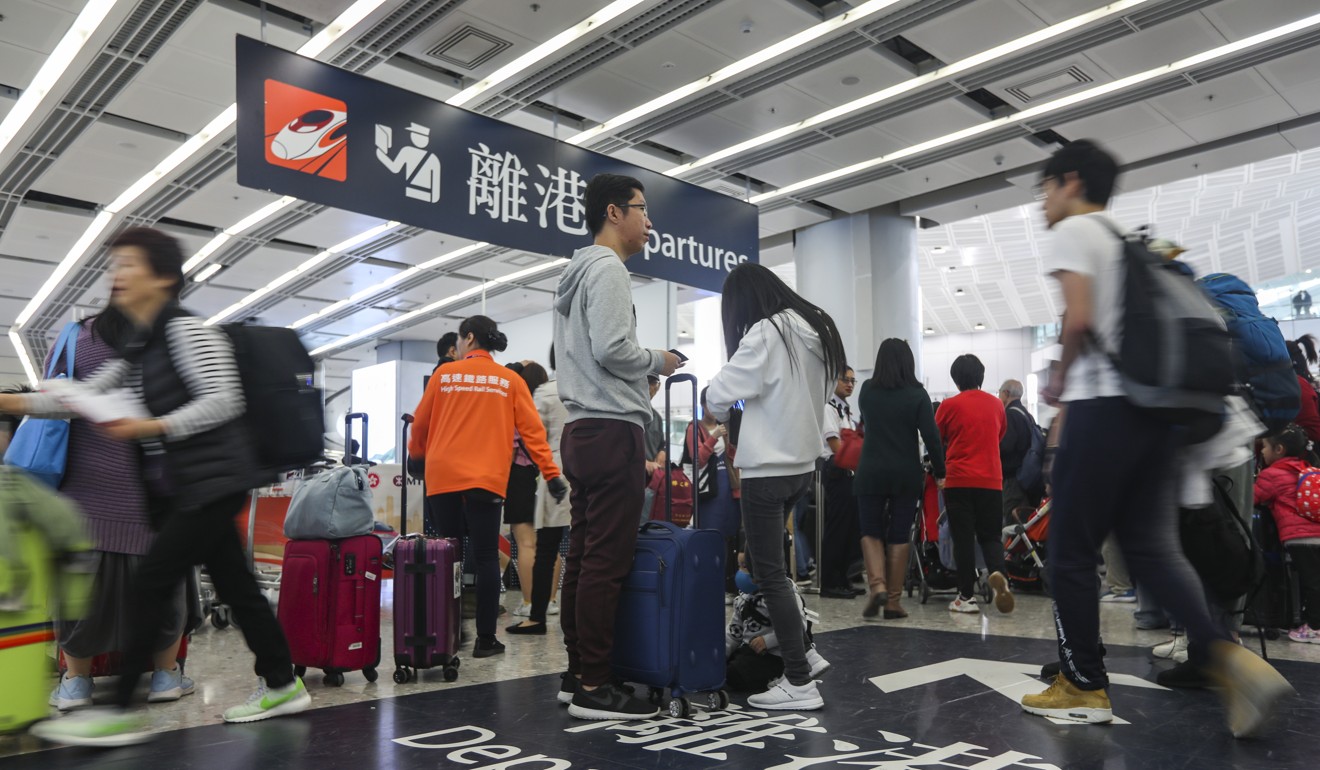More trains for Lunar New Year holiday on high-speed Guangzhou-Shenzhen-Hong Kong Express Rail Link, says MTR Corporation
- Nearly 200 trains will run to and from West Kowloon station every day from January 31 to February 11
- MTR Corp operations director says government subsidies not needed for rail link despite disappointing passenger numbers in its first three months

Hong Kong’s high-speed cross-border rail link will boost train services during the Lunar New Year holiday to cope with the influx of mainland Chinese tourists as the railway continues to battle lacklustre passenger numbers.
From January 31 to February 11, there will be 190 trains every day to and from Hong Kong West Kowloon station – 164 for short-haul trips and 26 for long-haul – compared with 166 trains during regular service.
The move came as the MTR Corporation’s operations director Adi Lau Tin-shing said on Thursday that between September 23, when the Guangzhou-Shenzhen-Hong Kong Express Rail Link opened, and the end of last year, about 5.2 million travellers used the much hyped line. Average daily passenger numbers were 52,000, about 35 per cent below the government’s expected figure of 80,100.
The railway, which was more than a decade in the making and cost the city HK$84.4 billion (US$10.8 billion), looked set to miss its year’s profit target of HK$199 million before tax and interest and its estimated revenue of HK$671 million.
But Lau insisted the express rail link was faring well in terms of its patronage, saying that at this stage there was no need for the government to step in.
“So far there is no need for any government subsidies,” he said, referring to a deal with the government that it would subsidise 70 per cent of losses incurred if passenger numbers were below a certain threshold.
“For the first 100 days of operations, the average daily patronage reached 52,000. This is a relatively high figure. Of course there is still room to do more. We will continue to liaise with travel agencies to launch more tours via the high-speed rail link,” he said.
Critics have poured cold water on a government prediction the link would be profitable from day one. The 26km Hong Kong stretch of the line connects with another section in mainland China linking the city to 44 destinations across the country.
The MTR Corp, which is 75 per cent owned by the government, will pay the wholly government-owned Kowloon-Canton Railway Corporation (KCRC) HK$2.7 billion over the next 10 years for the right to operate the rail link.

But Lau was upbeat about the rail link’s outlook, saying more measures were introduced to boost its sales, including relaxing access to the mainland’s 12306.cn website to allow Hongkongers to use it to buy tickets.
“We will also be in talks with the China Railway Corporation to explore more ticketing concessions and ways of boosting the high-speed rail business,” he said.
Regarding the replacement of the signalling systems on the city’s MTR lines, Lau said the first new signalling system would be put into service on the Tsuen Wan line in the second half of this year, with full-line train tests being carried out during non-operational hours.

Lau warned of technical hiccups and teething problems from compatibility issues caused by the new system. “We will do our best to manage risks, but this is a new system and teething problems in major system overhauls cannot be totally avoided. Appropriate contingency measures will be put in place to minimise any negative impact,” he said.
The rail operator also reported an overall on-time performance of 99.9 per cent last year for its train service, the second-best performance since the MTR and the KCR merged in late 2007. This was despite an unprecedented simultaneous breakdown of four MTR lines in October that caused six hours of commuter turmoil.
Last year, the company was slapped with an overall penalty of HK$20 million for causing 12 incidents involving a service delay of 31 minutes or more.